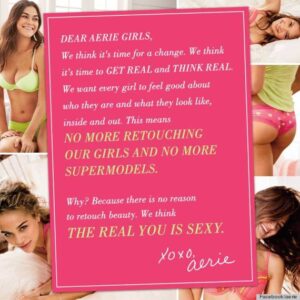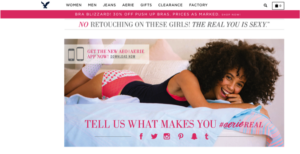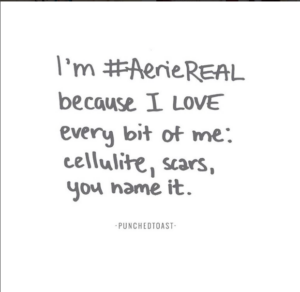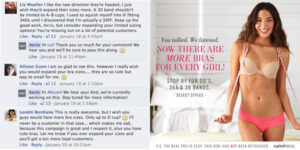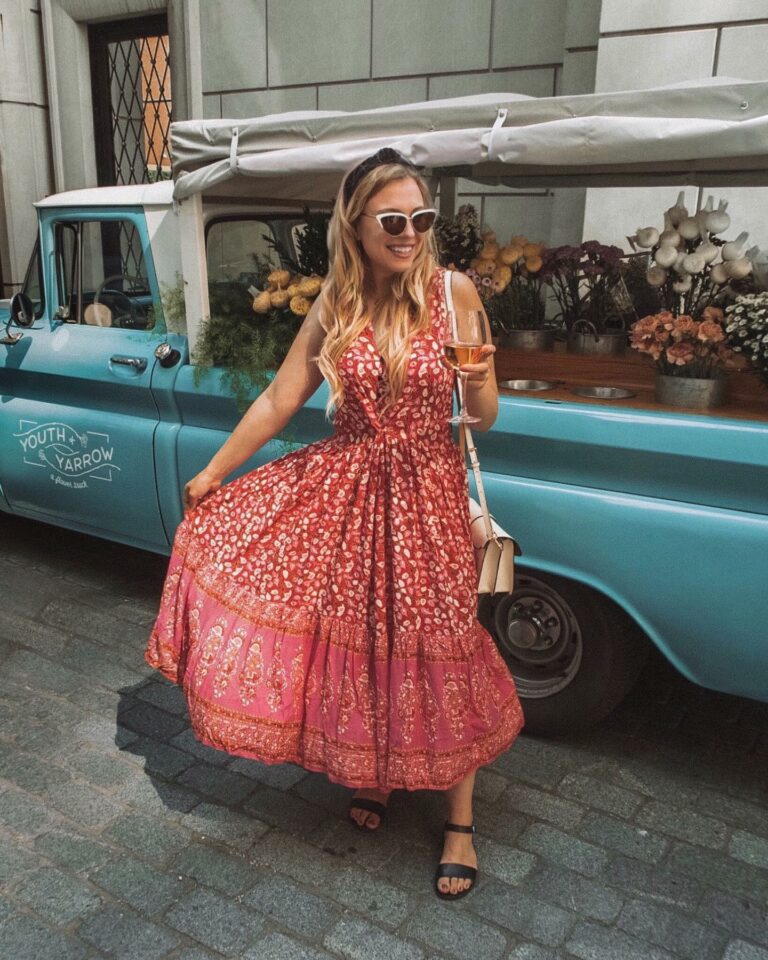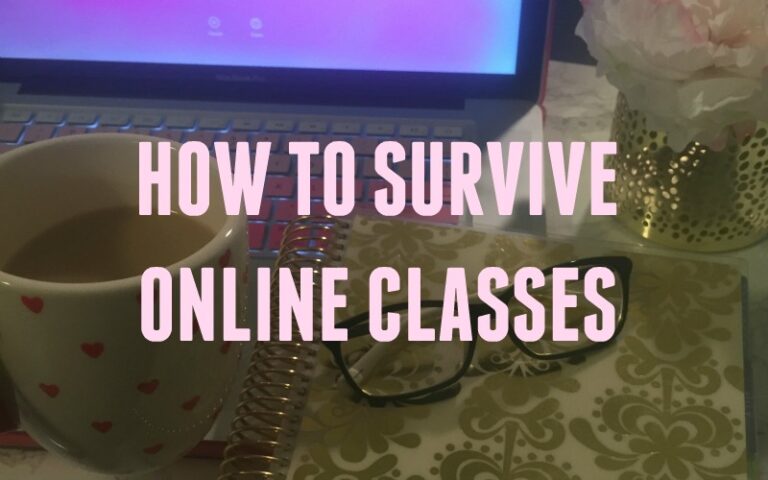#aerieREAL
According to NYC Girls Project, “60 percent [of girls] say that they compare their bodies to fashion models, 48 percent wish they were as skinny as the models in fashion magazines, and 31 percent of girls admit to starving themselves or refusing to eat as a strategy to lose weight.”
The challenge for intimate apparel companies then becomes how to market and sell products to an audience that feels uncomfortable in them.
Aerie, a lingerie and intimate apparel subset of American Eagle Outfitters, chose to treat the underlying root of the problem. The #aerieREAL campaign, launched in spring 2014, set out to “challenge supermodel standards” by using real, un-retouched girls to model their products and promoting body positivity.
Aerie capitalized on engagement with its audience to change the status quo and promote body positivity through this campaign. Engagement is a point on the user involvement continuum which is marked by physical interactions with media leading to cognitive experiences, which in turn results in user absorption with content, finally cumulating as behavioral outcomes in the form of outreach. Through the interaction between the brand and its consumers, #aerieREAL proved to be so successful that it has begun to transition from a campaign into a key identity of the brand.
The campaign strategy appears to first get girls to feel empowered, and secondly, to buy their merchandise through their new-found self confidence. Not only does the campaign target girls and women aged 12-25, it targets their mothers. Moms do a lot of shopping with or for their daughters, and know firsthand the struggles girls go through with self-esteem during their teenage years. Aerie showed they are supporting these mothers by also wanting to create strong, secure girls, and believe that moms will choose to buy their products for their daughters.
Aerie physically interacted with the media by creating magazine ads, billboards, and mailings. The ads featured models of all shapes, sizes, and races without any digital retouching, allowing beauty marks and scars to be seen and celebrated. The idea that a “normal-looking” girl could appear in ads created interest, specifically for the vast majority of girls who are not 5’10” and “stick thin.”
The key messaging in the campaign was “The girl in this photo has not been retouched” and “The real you is sexy.” At the time, nearly every single image used in advertisements was heavily edited and featured cookie-cutter models. The fact that Aerie flat out rejected these false ideals of beauty and instead chose to embrace those that society’s standards did not was groundbreaking and generated curiosity. The choice of the word “sexy” in the messaging draws the audience’s mind to contrast Aerie with its competitor, Victoria’s Secret. Victoria’s Secret frequently uses the word in their messaging and product names. Along with their subset, Pink by Victoria’s Secret, that also targets the same audience of girls 12-25, the company has been criticized for using extremely thin models and perpetuating unrealistic standards of beauty. The two tagline of the #aerieREAL campaign mean to tell girls not to aim to be “their” unrealistic standard of beauty and encourages them to embrace themselves because Aerie does.
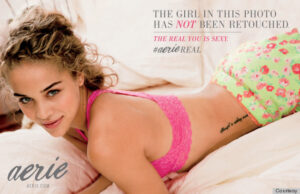
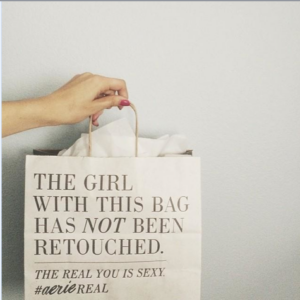
By creating the hashtag #aerieREAL, the campaign expanded into social media, including Facebook, Instagram, Twitter, and YouTube. The posts received lots of attention, gathering record amounts of likes, shares, and comments, showing serious user absorption of content. Aerie began using the hashtag to get consumers to interact by creating their own content. Outreach began when consumers began giving testimonials about what #aerieREAL meant to them, and Aerie would in turn share their posts.
In addition to changing traditional media and social media, Aerie created a special in-store experience for consumers. “Real Girl Talk” encouraged customers to give feedback to employees about products and talk openly about body positivity. This aspect of the campaign really resonated with the audience, and showed Aerie the importance of two-way communication with the audience to build a loyal customer base. The “Real Girl Talk” spread online and linked up with #aerieREAL, allowing online customers to also give feedback and participate in open dialogue about beauty standards in the fashion industry.
As a result, Aerie began carrying new sizes of products to fit consumer needs and to further encourage body positivity. By including these larger sizes, Aerie sent a message to girls that every type of body is beautiful and can wear their products.
In addition to the outreach created by users themselves, Aerie took it upon themselves to officially sponsor the National Eating Disorder Association and further support girls’ physical and mental health. Through creating the #aerieREAL campaign, Aerie has shown girls that everyone is beautiful and contributed to the start of a shift in our society’s beauty standards.



